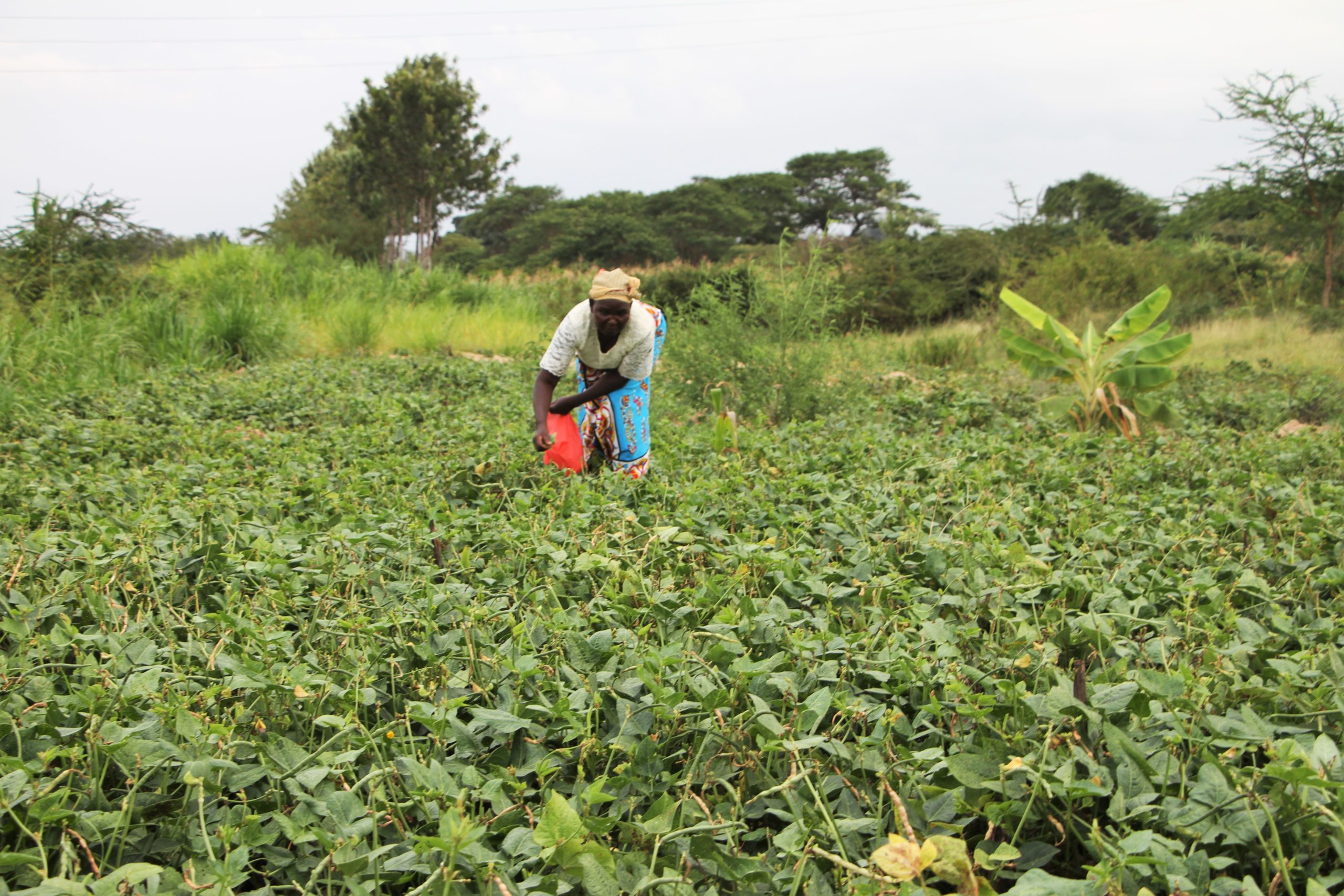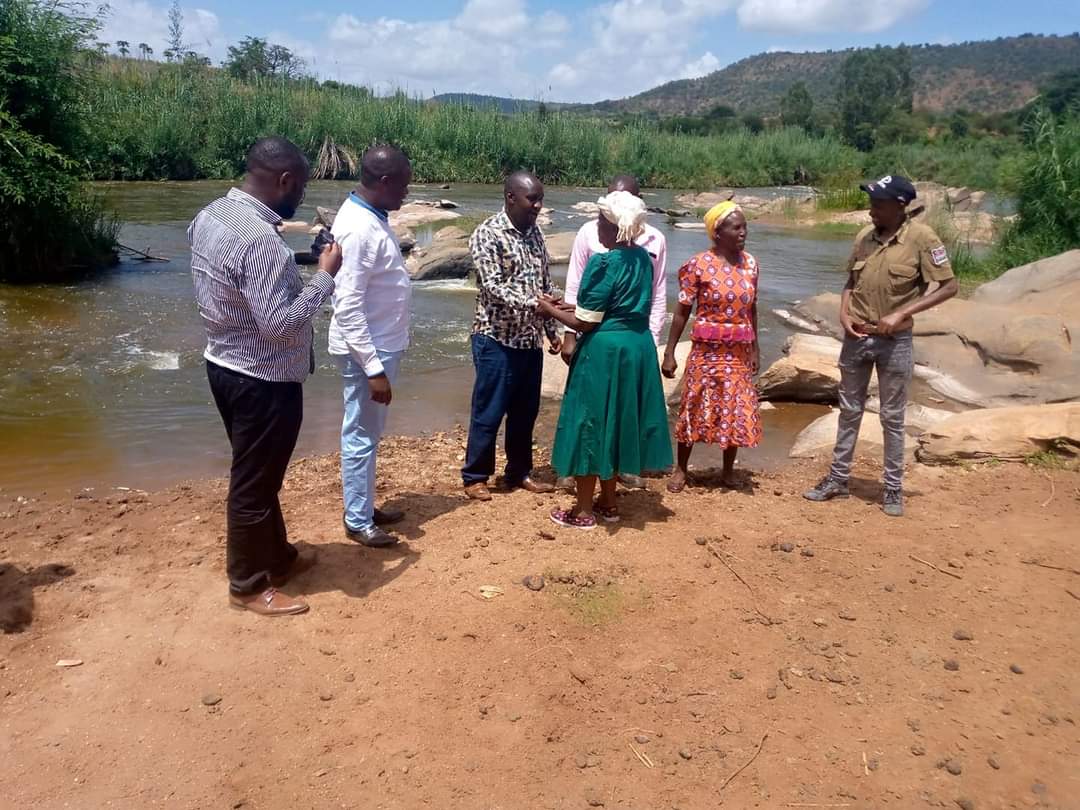Groundbreaking Workshop on AI and Technology-Facilitated Gender-Based Violence at AWiM24
Trending
Wednesday April 2, 2025
Trending

Women bear the brunt of plastic pollution in rivers
Nairobi
Where do you take your plastic water bottle after drinking the water? Do you keep it in your bag or do you toss it by the roadside? In the wake of climate change, Kenya has been getting flash floods during the rains and when these plastic bottles, coffee cans, and non-woven bags block the drainage trenches in Nairobi, they are then washed into the Nairobi River and find their way into Athi River, whose water is used in the Lower Eastern parts of Kenya, including the three counties of Ukambani and Lamu.

A visit to Fourteen Falls in Ol Donyo Sabuk, on the border of Machakos and Kiambu counties in Kenya is a depiction of how badly the environment has been affected by careless dumping of plastic bottles, and other items like plastic cups, straws, and non-woven carrier bags.
Approximately 45 men have been making their living by diving into the fall entertaining the tourists visiting the place. Davis Kamau, one of the divers here, a 32-year-old father of two says life has been different from what it used to be many years ago when the river was cleaner.
“As you approach the Fourteen Falls, the freshness of the trees around it and the soothing sound of the falling water gives you the holiday feeling, but getting to the site might be shocking once you come face to face with the debris all over the rocks,” he said, “this has been keeping our visitors away and we cannot feed our families as we used to.”
He added that the situation is usually worse during the rainy season as all these plastic items are washed downstream and as the water subsides, the debris is left by the river banks and they are left with the task of collecting these bottles and stacking them inside sacks and are burned.
Kamau says the villagers living near the river wake up to the ugly sight each day until they are able to clean the place up, just in time for the next rainy season and the cycle continues.
According to Kamau, part of the debris collected include used syringes, used tampons, sanitary pads, diapers, empty milk sachets, water bottles, beer cans, and the newly introduced non-woven bags that came to replace the plastic carrier bags. “We are wary of diving anymore because after collecting all these items, you imagine the dirt in the river you will be diving into, knowing too well we sometimes drink this same water and swallow it in the course of our job, for example when you find a syringe in the river, and used bandages, it means someone from a hospital somewhere dumped items in the river, and you wouldn’t want to know what else was dumped!’ lamented Kamau.
Apart from this, the women who sell fast food and other merchandise at the tourist site have been forced to look for alternative businesses now that fewer people visit this place unlike before.
Ann Nduku, one of the businesswomen who sells bracelets and other beaded items says she has managed to keep her business because it does not involve foodstuff, and so the few people who still visit the place are able to buy her items. “Many women that we used to do business with here left because who will want to buy food in a place that has such a bad stench?” she adds,” so those that do not sell food items have remained and those that were relying on business like selling fries or otherwise, have had to relocate.” Things have not been easy for the households relying on water from this river, stretching down through Machakos County, Makueni and Kitui into Tana River in Kenya.
In the dry season, residents have been able to do vegetable farming near the river bank by digging up shallow wells where they can draw water and irrigate their vegetables. Mary Makau a widowed mother of three has been eking a living out of hawking kales and spinach in her village in Yatta in Machakos County one of the dry areas relying on River Athi.
She says her business has not been easy because she is not sure of the safety of the water she uses to irrigate the vegetables, after seeing the dirt that comes with it.
“We cannot use this water during the rainy season and still when the water starts drying up, we still know it is not safe for us because we hear the water has bad chemicals, and to imagine I do farming here, and we feed our children on these vegetables!” she laments.

The residents here say the water is usually very dirty during the rainy season and soon develops the algae bloom and water hyacinth, making it hard for them to use it for their domestic use. According to them, this invasive weed marks the height of the dry spell and has impaired fishing and other activities especially the section of the river which passes through Kabaa in Machakos County in Kenya.
However, Mary says women groups have been educating fellow women in the villages on the need to clean the water before use. The shallow wells that they have been digging near the riverbank have been helping in cleaning up the water, while organizations like the Africa Sand Dam Foundation have helped them in constructing sand dams on the lower parts of the river.
“This sand helps in purifying the water before you even fetch it and it gives one the assurance that it has sieved out some of the dirt, we then decant it at home using pebbles, sand, and pieces of charcoal which are carefully arranged in a water jar then we boil it or use water guard,” says Mary.
The Former Member of Parliament for Yatta Constituency in Machakos County Francis Mwangangi has been making calls to the National Government to expedite the clean-up process of Athi River following a report tabled in parliament in 2016.
The report states that the massive pollution of the river can be attributed to raw sewage, industrial waste, and medical waste disposed of off directly into the river, as (approximately $21,952,932.75) is targeted to be used for the clean-up exercise.
However, according to Mwangangi, this exercise has not yet started and the residents continue to use the polluted water which is a big risk to their health. Mwangangi makes a plea to the government to speed up the process, especially during these times of climate change.
“We did a comprehensive report in 2016 and expected money to be set aside in the 2016/2017 financial year budget for this clean-up and up to now, we have not seen any of that being implemented,” he says, “the report is very clear on what needs to be done and how it needs to be done.”
Last year in 2021, the auditor general’s report revealed that the Kenyan shillings 82 billion (approximate $720,139,662), Thwake Dam may not help residents as expected following the massive pollution of Athi river which will drain into the dam.
This is in line with Sustainable Development Goals SDG 15, to protect, restore and promote sustainable use of terrestrial ecosystems, sustainably manage forests, combat desertification, halt and reverse land degradation and halt biodiversity loss.
According to United Nations Environment Programme (UNEP), the challenge in the 2030 Agenda is to develop and enhance integrated approaches to sustainable development approaches that will demonstrate how improving the health of the environment will bring social and economic benefits. Alexander Mangwiro, the Programme Management Officer at UNEP, Chemicals, Waste Management and Air Quality Sub-programme says packaging is the largest market for plastic resin.
According to Mr Mangwiro, UNEP has produced a publication “Tackling Plastic Pollution‟ which is a legislative guide for the regulation of single-use plastic products to assist guide countries draft instruments to legally control the management of single-use plastics. “This will include the enforcement of the ban Act (2017), incentives to foster the use of alternative carrier bags, and turning water hyacinth problem into fully-fledged hyacinth bags industry which could substitute the plastic bags industry,” he adds.
According to a 2009-2013 report by National Environment Management Authority (NEMA) in Machakos County, Athi River and its tributaries dry up during the dry spell, and due to increase in population and economic activities, the water resource is continuously becoming scarce while conservation measures such as afforestation, construction of sub-surface dams along the river valleys and constructions of dams and pans to capture surface water run-off have not been taken seriously. NEMA however proposed to ensure there were pollution control mechanisms put in place to help the residents.
One of the political aspirants in Machakos County, the then Chief Administrative Secretary for Transport Wavinya Ndeti, has been giving water tanks to women groups and encouraging them to harvest rainwater for use during the dry season.
She says this will help them grow and sell vegetables which will better their livelihoods. “So far I have given five women groups the 10,000 litres-tank, each group consisting of one hundred women because women are hardworking and will ensure their families are well taken care of especially when we need water due to climate change,” says Ndeti.
Ms Ndeti says women living along the river bear the brunt of the pollution and have suffered both economically and health-wise since they rely on the polluted water, their children are prone to waterborne diseases, and end up spending the little money they earn from their small scale businesses to cater for medical expenses.
“These water tanks will come in handy in solving health-related issues for the women, empower them economically and reduce the hours they spend in looking for water from cleaner rivers,” she said.
This article is part of African Women in Media (AWiM)/UNEP Africa Environment Journalism Programme
Would you like to republish this story? Kindly contact janet@africanwomeninmedia.com
We’re not gonna spam. We’ll try at least.

Copyright 2020. African Women In Media